Advertiser content
Grass harvest streamlined thanks to engine remapped fleet
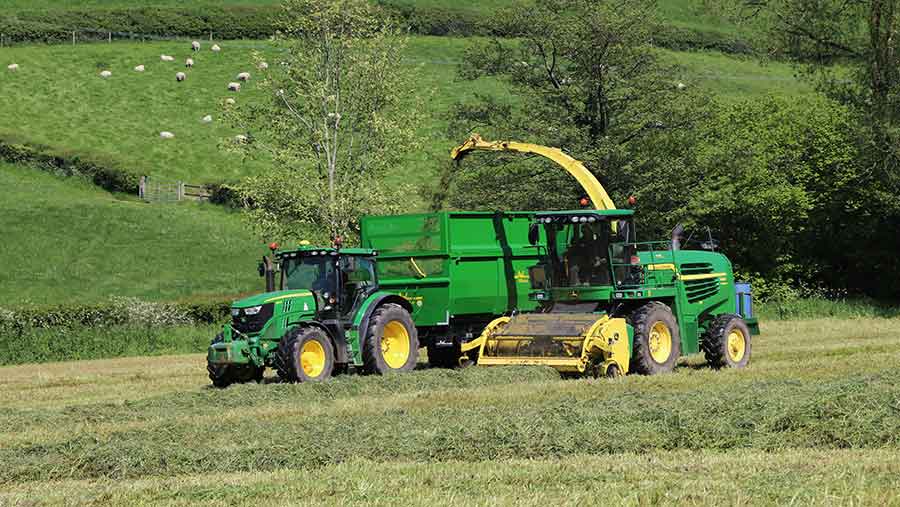 © Avon Tuning
© Avon Tuning Handling the full grass harvesting operation in-house means relying on machinery that can guarantee reliability and output when required, which is why one Welsh farming family has chosen to apply professional engine remaps to its machinery fleet for greater efficiencies.
In 2010, brothers Ed, Owen and Andrew Williams decided to go it alone with grass harvesting after becoming concerned about missing grass quality peaks due to relying on a contractor, as Ed explains.
“When the weather turned and we wanted to harvest, everyone else was in the same position, so we would either be lucky and at the top of the list, or have to wait, which meant risking forage quality as a result.”
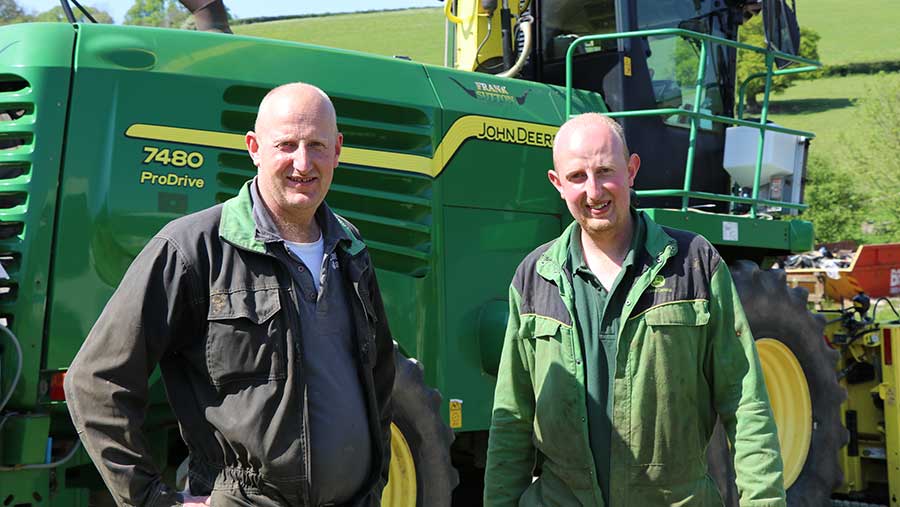
Ed and Owen Williams © Avon Tuning
To combat this, the farm has accrued a machinery fleet capable of handling the multi-cut system. It has run John Deere tractors for several decades and although they like the brand, every machine on the farm has been remapped to increase output and tailor engine characteristics to specific applications.
Based in Usk, south Wales, the mixed farm has 220 Holstein Friesian dairy cows along with 140 beef cattle. The arable cropping extends to 105ha of wheat and barley, 40ha of maize, and 140ha of grass, which is regularly reseeded to maintain performance and quality.
6155R problems
The machinery fleet had performed well since taking over the harvesting. However, the recent arrival of a JD 6155R caused the brothers to be concerned at the lack of power it offered for certain jobs, as Ed explains.
“We couldn’t keep the boost available when mowing with our front and rear twin mowers, which is one of the tractor’s main jobs.
“The tractor had to be running at a certain rpm with the PTO engaged to access the extra power, but we found it quickly died on the hills and we dropped below the boost parameters, so would regularly be running at rated, rather than max, power.”
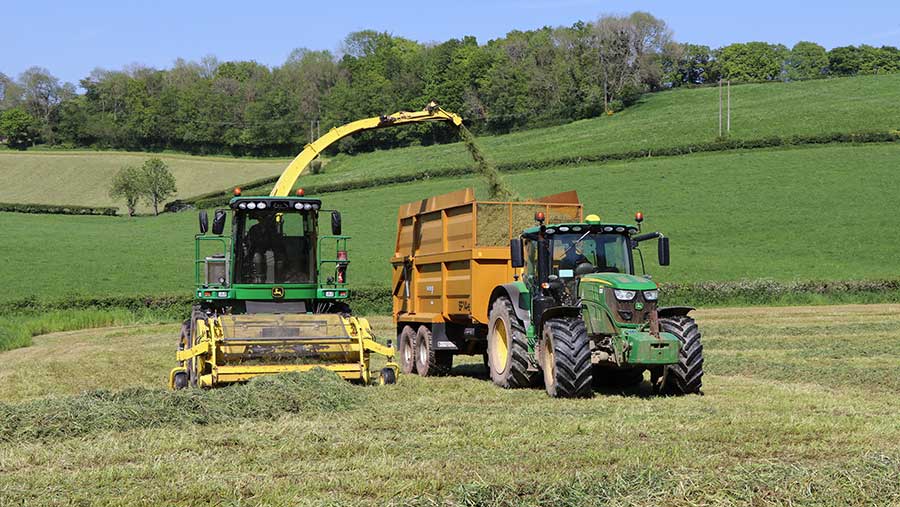
John Deere 6155R model © Avon Tuning
The farm wanted to avoid replacing the tractor before they planned to. They knew Rich Jenkins at MJ Agri and asked him to install an Avon Tuning HD bespoke remap onto the tractor.
Rich advised that he could remap the tractor to a similar power output as a 6R 185 model and allow boost to be available all the time, rather than when the tractor was at a certain rpm.
“Since the remap has been fitted, I think we probably have enough power to add a third mower and make it a triple outfit,” says Ed.
“We haven’t increased top end power by much, but Rich knew where the tractor required additional power and it is now available in the right place, which means we don’t lack response when hitting a hill.”
JCB improvements
It isn’t only the tractor fleet that has been remapped. The farm purchased its first pivot steer handler in 2019 after decades of using rigid telehandlers.
With the increase in clamp work, a JCB TM 420 was bought to roll the clamp and remove the need for a JD 6155R and front pusher to be tied up. Owen is the main driver of the TM 420 at silage time and explains the decision.
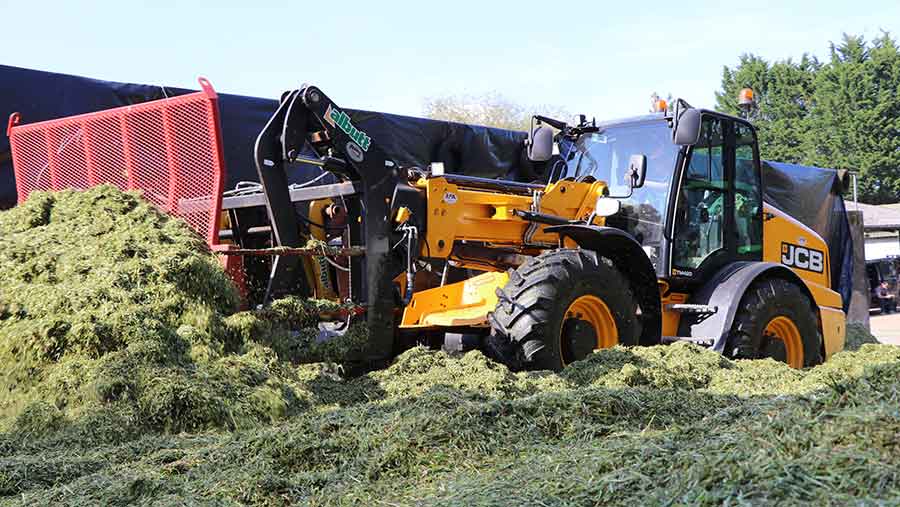
JCB TM 420 model © Avon Tuning
“The TM 420 was a two-year-old, second-hand machine as we couldn’t justify a new purchase. We would’ve liked the TM 420S, with the two extra gears and torque lock, but these machines were out of our budget.
“When we took delivery, we quickly noticed the new machine lacked power.
“The most obvious example was when using the hydraulics and climbing the clamp face at the same time. The loader just died, and we ended up having trailers waiting as we couldn’t clear loads quick enough to keep up.
“It didn’t feel very responsive around the yard either, so we asked Rich to look at remapping it.”
MJ Agri added another Avon Tuning HD remap so the standard TM 420 had the same power as a TM 420S, with the only differences being the gears and torque lock.
This was fitted to the loader soon after it arrived on 3,500 hours and it has covered 1,200 faultless hours since, which offers the farm confidence to remap machinery in the future. Owen details the improvements.
“It is like driving a different machine. It’s quicker climbing steep clamps and pushing loads at the same time. There isn’t a drop in power when using the hydraulics and moving either, so I can keep up with trailers. Throttle responsiveness has improved greatly for general yard tasks, too.”
The farm runs a 9ft Albutt fork, which Owen reckons is a good match for the TM with the map fitted. He said it would handle a wider one, but the small clamps and tight yards mean the narrower width is ideal.
Road work has also been improved and there is more in reserve when the loader meets a hill.
Mixer wagon tractor
A John Deere 6420S runs the mixer wagon daily and has also received an Avon Tuning HD stage 1 remap.
It hops between two yards, which requires hauling the Keenan mixer up a steep slope, and Ed says the difference it has made has been incredible and slightly unexpected.
“We didn’t think that adding a remap to a small tractor like this would be so effective, but it is. When driving up hills, we can stay in a higher gear and at a faster speed, which allows more options if the tractor starts to struggle.
“Having the power delivered in the right place has been key to the improvement. Power delivery to the mixer wagon is also smoother and it doesn’t feel like it is always on its limit.”
The JD 7480 forager is the third self-propelled harvester the farm has owned, and it plays a key role in maximising the quality of the forage.
Unsurprisingly, it has also been remapped to improve the power curve and prevent the engine becoming dragged down in heavy crops. Ed is the main driver and says why it was needed:
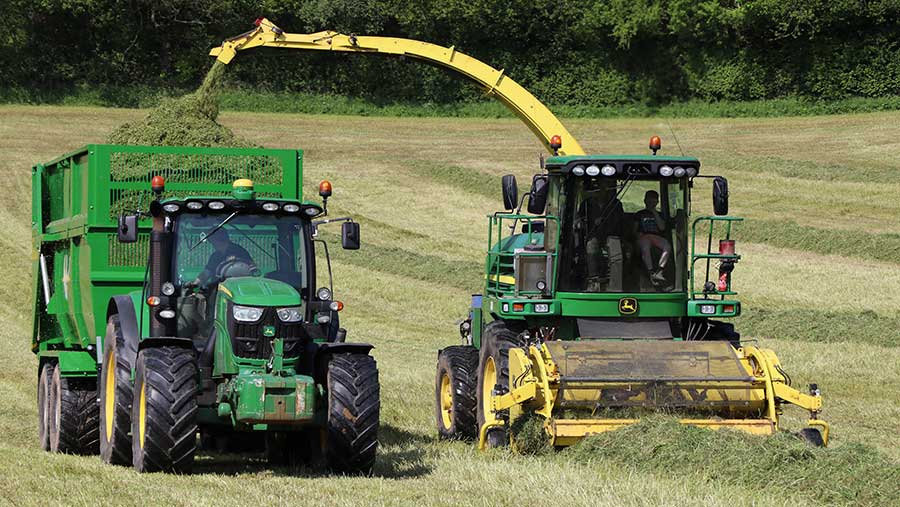
John Deere 7480 model © Avon Tuning
“The first cut is always the heaviest crop, and most years we can’t walk across a swath, so the forager is working at its limit the whole time. The map helps it maintain performance when the crop density changes. When a lump of crop goes in the front the recovery time is quicker to get back to its operating peak. It’s only a little change but it makes a lot of difference,” says Ed.
Ed and Owen wouldn’t hesitate to remap any new tractors they purchase as the efficiencies they have experienced far outweigh any additional fuel use and allow the farm to complete their workload in a timelier manner.
Provided by
Avon Tuning HD provides a bespoke engine remapping service to increase work efficiencies and safely improve performance for a wide range of agricultural machinery.
